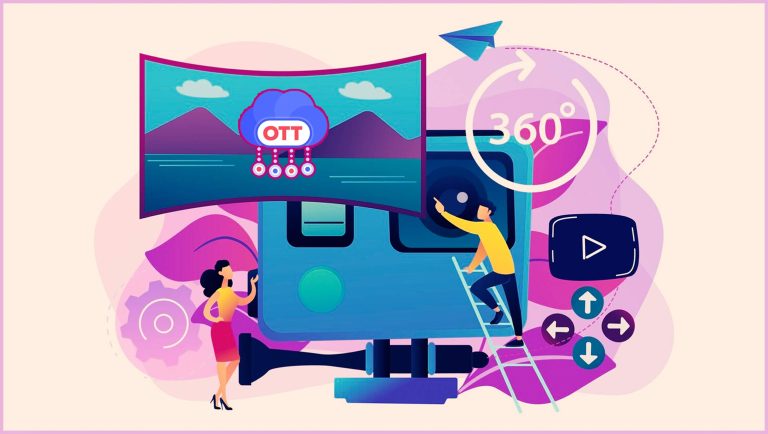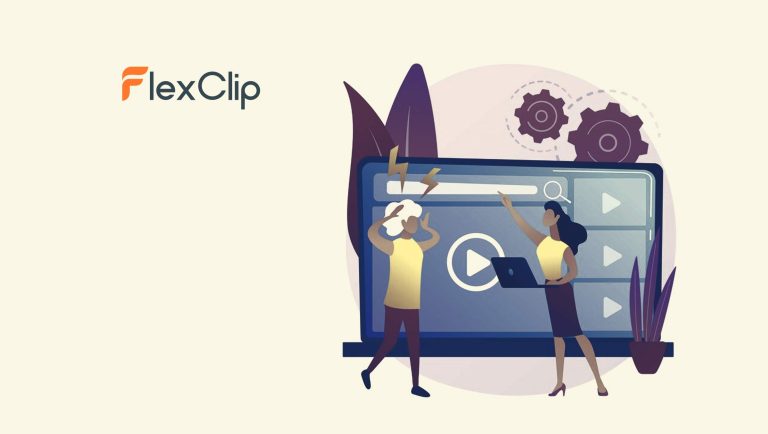Lisa Bennett, VP Marketing at Kaltura shares a few observations surrounding the need for a hybrid approach to today’s events and what the near-future holds for B2B when it comes to virtual and online gatherings.
________
Welcome to this MarTech Series chat Lisa, tell us more about your marketing day at work at Kaltura?
Thanks for having me! As Vice President of Marketing at Kaltura, I am primarily focused on corporate and brand marketing. We have marketing and demand gen teams for each specific business unit (covering our tools for virtual events, education, town halls, meetings, cloud TV, and other video needs) and my team is cross-organizational and strategic. Our goal is to set the tone and direction for all of the other teams to ensure that we are all aligned and on the same page.
Marketing Technology News: MarTech Interview with Bernadette Butler, CEO and Co-Founder at StoryTap
How has Kaltura evolved over the years and how have your recent innovations in the events space changed the way the platform is meeting evolving needs in the B2B marketplace?
From day one Kaltura took a platform approach- APIs and open modules are the core of our operational methodology. We wanted users to be able to easily leverage our offerings across different solutions. Our vision was always to be an adaptable platform that would evolve with the times and each organizations’ specific needs. It has also empowered us to innovate quickly and meet new, evolving needs from customers.
To say that the demand for video solutions has drastically increased over the last two years is an understatement. Every industry has had to integrate video internally and externally and you can imagine that different companies have developed different needs and preferences. A key pillar of our company is the belief in constant communication with our customers. We make it a priority to get their feedback so we can create the tools they need when they need them.
Overnight, virtual events also went from being a nice to have to an absolute necessity. The spike, not only in demand but in the diversity of needs led to tremendous acceleration in our innovation around virtual events. We created event experiences that leveraged our full stack of video technology to accommodate any size audience, easy-to-manage broadcast capabilities, live and recorded sessions, workshops, chat and networking, and above all the ability for marketers to brand their events.
What are a few best practices you’d share with B2B marketers when it comes to optimizing their events/hybrid events strategies?
First and foremost, content is king, and that applies to the speakers, the sessions, and the materials produced and shared around the event. There needs to be more than just one medium for presenting content, including pre-recorded sessions, live presentations, panel conversations, meeting rooms, on-demand content, interactive demos, and any combination of the above. But the good news is there is no shortage of creative ways to frame and offer content to engage your audience.
Secondly, you always have to be thinking about hybrid solutions. Not every event needs a hybrid element, but many do, and sometimes, it should just be a small in-person event. Make sure that you’re always thinking in advance about what the hybrid aspect should be for each event. Additionally, while live events have a specific attraction VOD has also become a must. Just because someone misses the live session doesn’t mean they want to miss out on the material, so it is now critical to make all the sessions easily accessible for later viewing.
Last but not least, you have to build the most impactful event for your target audience. Attention spans are more fleeting than ever, and people simply will not show up for things they don’t care about. A small, focused event may very well be more attractive and result in higher engagement than a larger more general one. Start with figuring out what the strategic goals are of the event and work backwards. If reach is your goal, the more virtual the better. This will allow attendees to join from all corners of the globe and enables brand recognition that would not normally be possible with a physical event.
Marketing Technology News: MarTech Interview with Jeff Lortz, CEO at Creator by Zmags
As meetings solutions become more sophisticated, what should brands and customer-facing teams keep in mind when adopting such solutions for client-facing purposes?
It’s easy to fall into the pattern of treating virtual meetings as phone calls with video, but to use them as such is an enormous waste of potential. There is a new level of participant interactivity that can be achieved when managed correctly.
It’s important to remember that virtual gatherings are not one size fits all, and just as with in-person meetings, the meeting needs to be driven by purpose. This relates both to the management of the meeting by the meeting leader or organizer, but also in the technical features of the meetings solution being used – training sessions are not the same as team meetings or webinars, to name a few. Virtual and hybrid meeting etiquette is also a new challenge that organizations need to tackle head-on to ensure that there is no imbalance of power. This is particularly important for hybrid settings, where those physically present may unintentionally exclude those participating virtually.
For larger organizations, content hubs are becoming crucial, not only as a repository of knowledge for new employees and partners but as a source of information for prospective clients.
A few thoughts surrounding the future of meeting and event technologies?
Over the next 12-18 months, organizations will be learning what level of hybrid works best for them through trial and error- and that’s a great thing. There is limitless potential for different types of events across the “hybrid spectrum” and getting it right will prove to be valuable for years to come. But ultimately, there’s no “one size fits all” here. Every company, every team, every event, will need to identify its goals and objectives before deciding how it should be executed.
Experiment! Be bold and different – virtual is here to stay and it has created a new balance of how people spend their time, weighing what demands physical presence and what can be accomplished virtually.
Some Predictions for 2022 you’d like to leave us with?
I think we’re going to see more and more convergence of live video, real-time communication, VOD, and the re-consumption of content. It’s up to us as marketers to deliver each of these in a way that is true to our brand and digestible for our audience members. This means learning our audience’s needs and consumption habits and catering to them accordingly. Technological features within hybrid events will continue to become flashier and more complex, and we’ll have to be open to the transformations that will continually come our way.
Marketing Technology News: MarTech Interview with Nick Mattingly, Co-Founder and CEO at Switcher Studio

Kaltura’s mission is to power any video experience for any organization. Kaltura is the leading video cloud, powering the broadest range of video experiences. Kaltura’s products are used by thousands of global enterprises, media companies, service providers and educational institutions, engaging hundreds of millions of viewers at home, at work, and at school.
Lisa Bennett is the VP of Marketing at Kaltura, where she leads corporate and brand marketing. Kaltura’s mission is to power any video experience for any organization. Kaltura’s Video Experience Cloud offers live, real-time, and on-demand video products for enterprises of all industries, as well as specialized industry solutions, currently for educational institutions and for media and telecom companies. Kaltura’s Video Experience Cloud is used by leading brands reaching millions of users, at home, at school and at work, for communication, collaboration, training, marketing, sales, customer care, teaching, learning, and entertainment experiences
Missed The Latest Episode of The SalesStar Podcast? Have a quick listen here!
Episode 108: Driving Sales Success with Jeremey Donovan, SVP of Revenue Strategy, SalesLoft
Episode 107: How New Age Technologies Can Drive Better eCommerce Sales with John Bruno, VP of Strategy at PROS
Episode 106: The Need for Predictive Systems in B2B: with Viral Bajaria, CTO and Co-Founder, 6sense
























